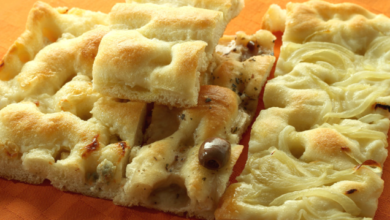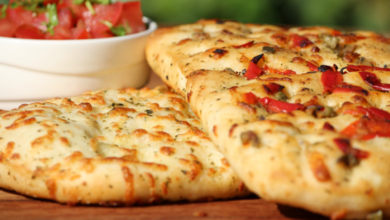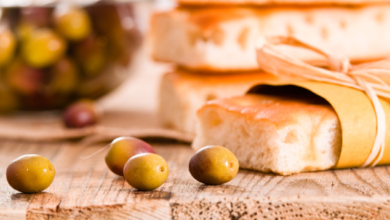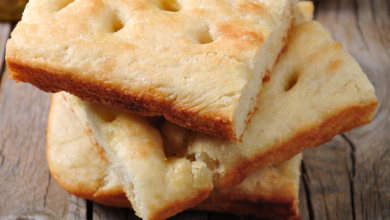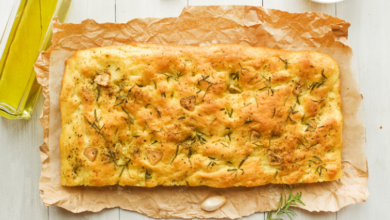Is Focaccia Dough Wet Because Of Its Olive Oil?
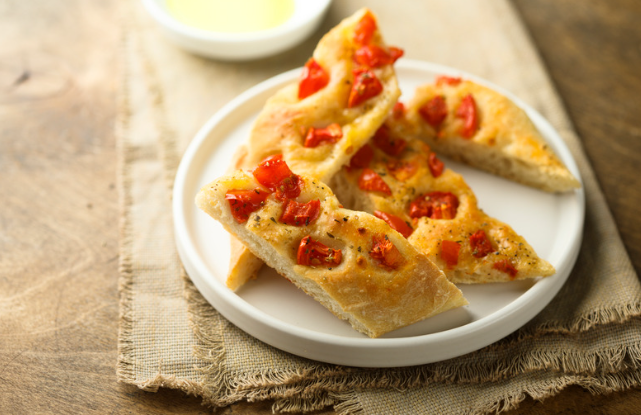
What To Know
- A wet dough contains a higher proportion of water, resulting in a dough that is more slack and sticky.
- For a chewier focaccia with a firmer crust, use a drier dough with a hydration level of around 65-70%.
- By carefully adjusting the hydration level and considering the factors that affect it, you can create a dough that will yield a soft, fluffy, and flavorful focaccia.
Focaccia dough, renowned for its airy texture and golden crust, has a distinct consistency that sets it apart from other bread doughs. Its unique wetness contributes to its characteristic softness and chewiness.
Defining Wetness in Focaccia Dough
The wetness of focaccia dough is determined by the ratio of water to flour. A wet dough contains a higher proportion of water, resulting in a dough that is more slack and sticky. This allows for easier stretching and shaping, creating the signature irregular shape of focaccia.
How Wet Should Focaccia Dough Be?
The ideal wetness for focaccia dough varies depending on the desired texture. For a soft and fluffy focaccia, use a wetter dough with a hydration level of around 70-75%. This means that for every 100 grams of flour, you would add 70-75 grams of water.
For a chewier focaccia with a firmer crust, use a drier dough with a hydration level of around 65-70%. This will result in a dough that is less sticky and easier to handle.
Factors Affecting Dough Wetness
Several factors can influence the wetness of focaccia dough, including:
- Flour: Different types of flour have varying absorption capacities. Bread flour, with its high protein content, absorbs more water than all-purpose flour.
- Yeast: Active yeast produces carbon dioxide gas, which creates air pockets in the dough. A higher yeast concentration can result in a wetter dough.
- Temperature: The temperature of the water and dough affects the hydration process. Warmer liquids promote faster absorption.
- Kneading: Over-kneading can develop the gluten in the flour, making the dough tougher and less wet.
Benefits of Wet Focaccia Dough
- Soft and fluffy texture: A wetter dough produces a softer and more pliable focaccia with a light and airy crumb.
- Easier stretching and shaping: The slack nature of a wet dough makes it easier to stretch and shape into the desired irregular form.
- Rich flavor and aroma: The higher water content allows for better fermentation, resulting in a more flavorful and aromatic focaccia.
Drawbacks of Wet Focaccia Dough
- Stickiness: A very wet dough can be sticky and difficult to handle, especially during shaping.
- Longer rising time: Wet doughs require a longer rising time to develop the necessary structure and flavor.
- Potential for dense texture: If the dough is too wet, it can become dense and heavy, lacking the desired airiness.
Tips for Working with Wet Focaccia Dough
- Use a stand mixer or a strong arm: The slack nature of wet dough can make it difficult to knead by hand.
- Add flour gradually: Start with a slightly wet dough and gradually add flour until it reaches the desired consistency.
- Let the dough rest: After kneading, allow the dough to rest for at least 30 minutes. This will allow the gluten to relax and make the dough easier to work with.
- Use a wet bench or oiled hands: To prevent the dough from sticking, keep the work surface and your hands wet or lightly oiled.
- Proof in a warm place: Proof the dough in a warm, humid environment to promote fermentation and prevent it from drying out.
Summary: Mastering the Art of Focaccia Dough Wetness
Understanding the wetness of focaccia dough is crucial for achieving the perfect texture and flavor. By carefully adjusting the hydration level and considering the factors that affect it, you can create a dough that will yield a soft, fluffy, and flavorful focaccia.
Information You Need to Know
Q: How can I tell if my focaccia dough is too wet?
A: If the dough is very sticky and difficult to handle, it may be too wet. Add a small amount of flour at a time until the dough becomes less sticky.
Q: What happens if I over-knead focaccia dough?
A: Over-kneading can develop the gluten in the flour, making the dough tough and less wet. Knead the dough just until it comes together and is smooth.
Q: Can I use a wet focaccia dough to make pizza?
A: While you can use a wet focaccia dough to make pizza, it may not be ideal. Pizza dough typically has a drier consistency to prevent it from becoming soggy when topped.
